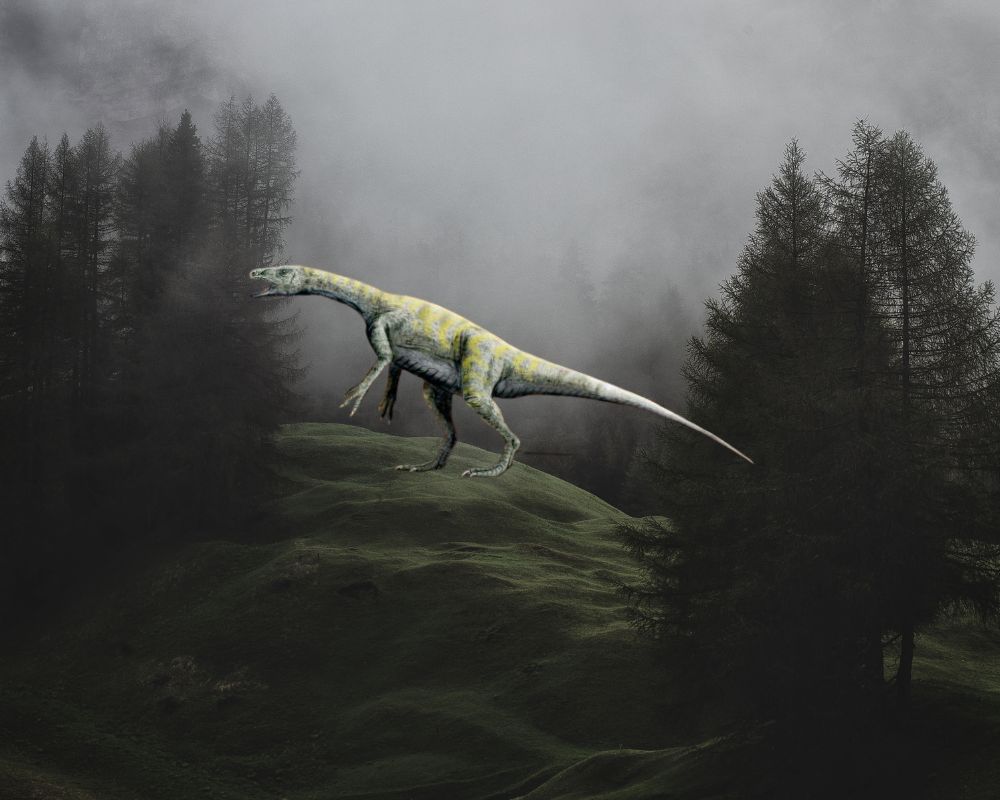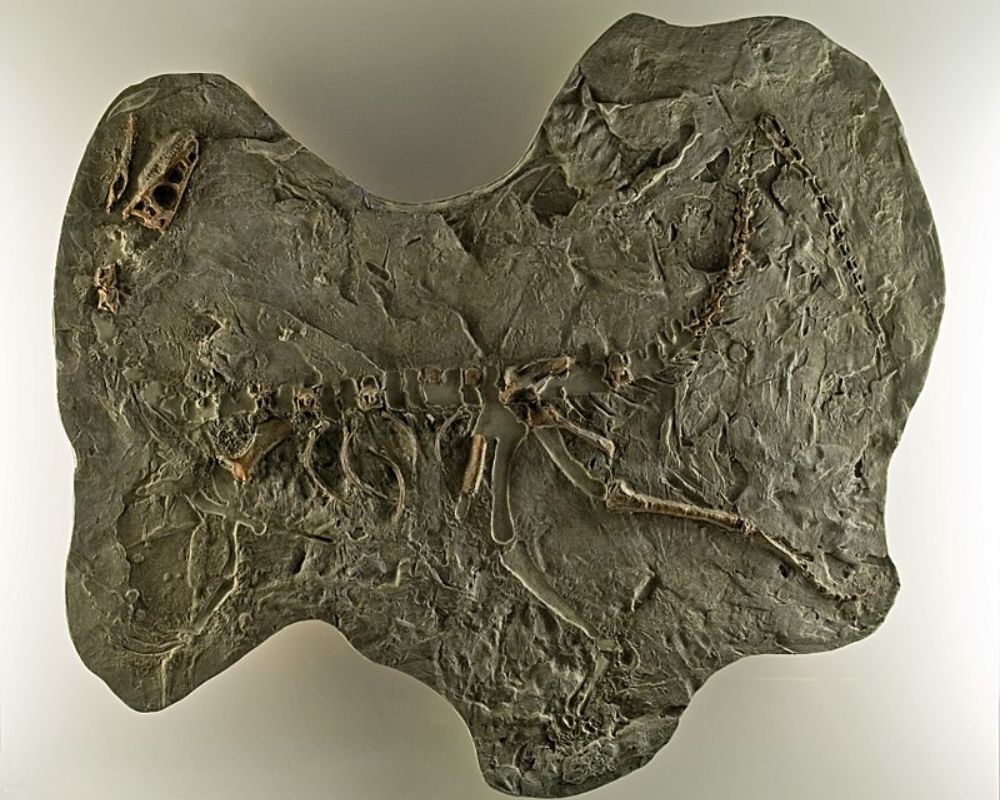The Panphagia is one of the earliest known dinosaurs. While other early sauropodomorph dinosaurs were herbivores, Panphagia was an omnivore. Its name (Greek for “to eat it all”) is a reference to its diet that included any plant or small animal the Panphagia could get its claws on!
Table of Contents
Some Quick Facts about the Panphagia

| Name | Panphagia (meaning “to eat it all” Protos-The first”) |
| Type of dinosaur | Saurischian |
| Territory | Heavily forested floodplain with conifer trees and giant ferns, San Juan, Argentina, South America |
| Size | 4.3-6 feet long, 1.5 feet tall |
| Color | Grayish |
| Interesting Characteristics | Bipedal with strong back legs and developed forelimbs. Hollow bones made this dinosaur lightweight and fast. |
| Diet | Omnivore |
| Major Threats | Climate change, larger predators |
In 2006, paleontologists found a single Panphagia fossil that would change everything. The Panphagia is a unique dinosaur, often called the missing link between early or basal sauropodomorph and theropod dinosaurs.
This early evolution of sauropodomorpha was an omnivore and looked far more like a theropod than other sauropods. After much study and debate, the Panphagia was determined to be a sauropod.
What Did a Panphagia Eat?
The name Panphagia (“to eat it all”) tells you all you need to know about this tiny dino’s omnivorous diet. The Panphagia ran on two legs and used its hands to catch small prey like lizards and small mammals. Panphagia also ate a variety of plant materials. Basically, Panphagia would eat anything it could get its hands on!
Panphagia had two different types of teeth in their jaw. The front teeth were similar to theropod teeth, made to rip meat.
But the back half of Panphagia’s jaw was filled with broad, leaf-shaped teeth like sauropods. These teeth helped grind plants up so they were easier to digest.
What Was the Size of a Panphagia?
The Panphagia was much smaller than the later species of sauropods. At around 19 inches tall and 4-6 feet in length, Panphagia was only slightly bigger than its predecessor Saturnalia. This means Panphagia was about the size and weight of a gazelle.
Being small helped Panphagia move through dense foliage in search of smaller prey and plants. Racing around on two legs, the quick Panphagia could easily stay out of sight of larger predatory dinosaurs.
While only one Panphagia fossil has been found to date, paleontologists believe that they moved together in small groups for safety like other similar dinos.
In What Environment Did a Panphagia Live?
Panphagia lived during the late Triassic Period in what is now Argentina. This area of South America was hot and arid, with lots of woodland areas and plenty of water. The Ischigualasto Formation where Panphagia fossils were found was also prone to flooding and volcanic activity.
During the late or Upper Triassic Period, ferns were large and tree-like. This is also when the earliest conifers appeared. With its small size, Panphagia would use the large ground cover plants and rocks to hide as it rushed through the forest looking for food.
Who Discovered the Panphagia?

The Panphagia was discovered by paleontologist Ricardo N. Martinez. The single Panphagia fossil was found in the Ischigualasto Formation where several other dinosaur fossils have been found since the 1990s. Martinez is the same paleontologist who discovered the Eorapter in 1991.
It wasn’t until 2009 that the Panphagia was named and described by Martinez and Alcober. Over ten years and many discoveries later, the original (holotype) Panphagia fossil is the only one of its kind.
But lots of other dinosaur species have been discovered in the Ischigualasto Formation. Eoraptor and Herrerasaurus fossils were found in the same area where Panphagia was found.
The discovery of Panphagia was an important shift in what scientists knew about early Dinosauria. Because Panphagia was living at the same time as herbivorous sauropods as well as theropods, paleontologists realized that the split between the dinosaur families happened much earlier in the Triassic Period than they first thought.
This makes the Panphagia one of the most important discoveries in paleontology of this millennium!

